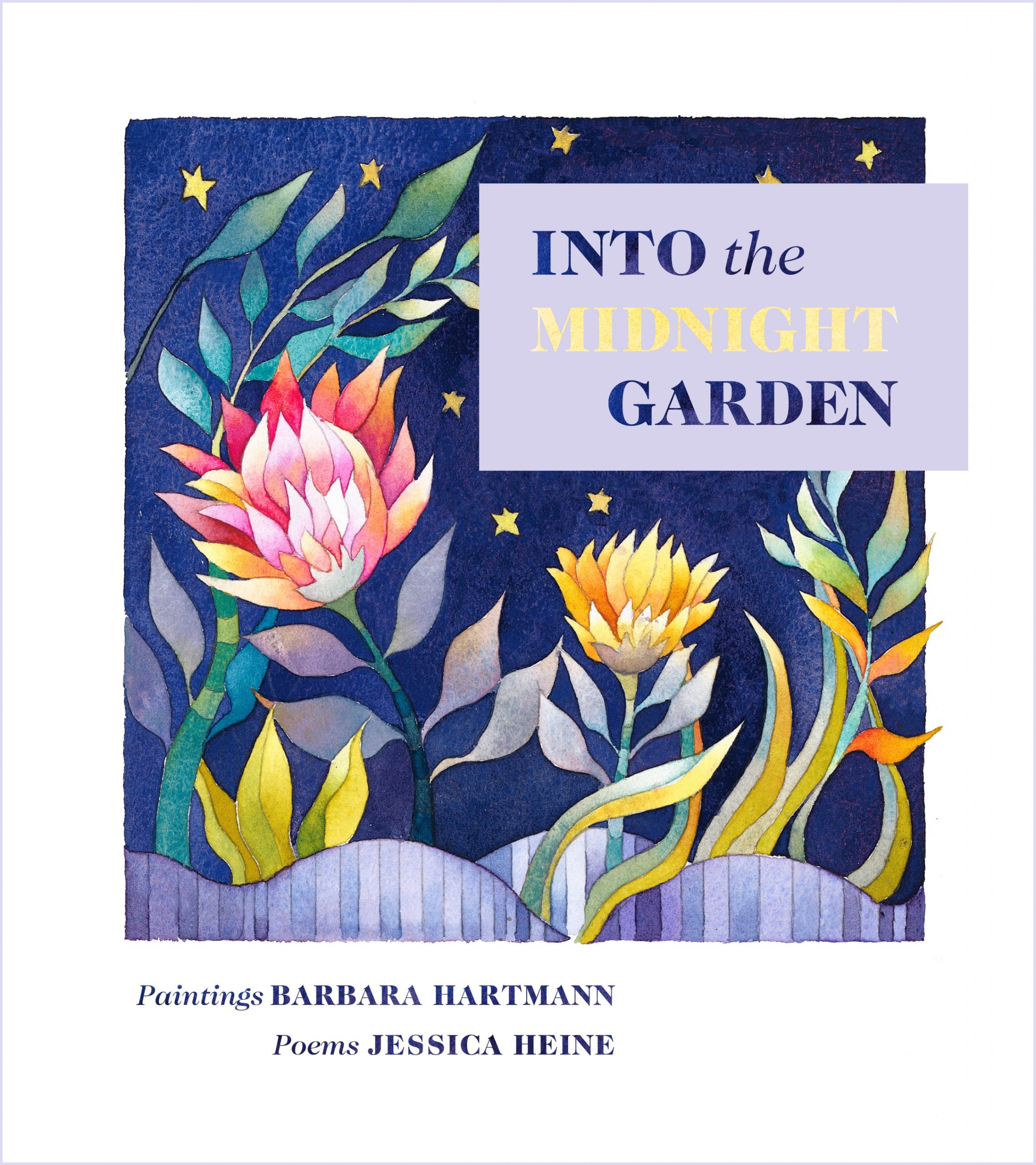Into the Midnight Garden

Into the Midnight Garden
FLIGHT from the CAROUSEL into the/ NIGHT
Sky above and ground below,
if we had it all we would still want more.
The word enough we will never know,
we are well fed but never full.
Unless an author is also an illustrator, a book that is meant to be illustrated usually begins with the text, and, if that manuscript is accepted by a publisher, the publisher then identifies an illustrator whose artistic style and choice of media, the publisher believes, will best suit bringing visual life to the words. Into the Midnight Garden’s origins were the reversal of the norm. In an introductory note, Barbara Hartmann, the book’s illustrator, explains that “Into the Midnight Garden is a collection of whimsical images and accompanying poems. The images are snapshots of magical stories inspired by the sense of wonder I always feel when reading fairy tales and fantasy.” After more than a decade of work, Hartmann’s collection of 18 watercolour paintings was completed in 2020, and she then considered how to unite them with words to produce a book. “I thought I would complete the book with quotes to accompany the pictures.” Then, Hartmann recalled her friend Jessica Heine, a singer and song writer, and invited her to collaborate. “The plan was that she [Heine]would look for an emotional connection between our work instead of obvious descriptions of my images.” As to the completed project, Hartmann observes”
To me, the images and the poems could stand alone. But together they are much more nuanced. I feel the visual and the literary images complement each other in a wonderfully – complex – way!
Heine does an excellent job in taking an aspect of a Hartmann watercolour and then developing a poem that incorporates that element without “describing” the piece of art. One of my favourites was “Hidden Song” which has a definite (but delightful) malevolent element to it. The focal point of Hartmann’s watercolour is a colourful “prince” standing in an equally colourful rowboat while playing on a horn of some kind. A very pale coloured recumbent mermaid can be seen beneath the waters. The narrator in Heine’s poem is the mermaid who is actually a siren who informs her listeners that she could have sung to him and made him “mine, if that is what I wanted.” Another example is “Winter Song II” where viewers see a Mary Poppins-like “princess/queen” flying over a nighttime winter landscape. From this scene, Heine chooses to pluck just a few snowflakes to develop the theme of the transience of events. And the book’s appropriately chosen closing poem, reproduced in the above “Excerpt”, visually features a “galloping” carousel horse, but Heine extrapolates from children’s memories of the mix of emotions as a carousel ride comes to an end to address “our” always wanting “more”, a desire which can be both good and bad.
Hopefully, readers of Into the Midnight Garden will want more, but the challenge with the book is identifying its school audience. The artwork will certainly appeal to students in an elementary school who can create their own stories about what they see, but, at the same time, a group of highschoolers might, on first glance, reject the book because its art makes it appear to be too juvenile. And the opposite is true of the poetry, the contents of which are accessible to students in high school but may be quite challenging to younger readers. In finally choosing a school audience, I’ve come down on the high school side because of the mature content of the poems, but the book would not be entirely out of place in an elementary school library.
Dave Jenkinson, CM’s editor, lives in Winnipeg, Manitoba.
